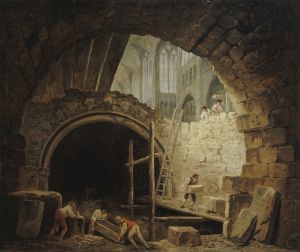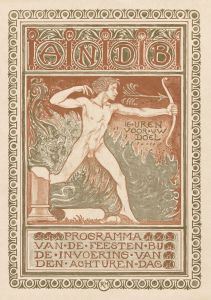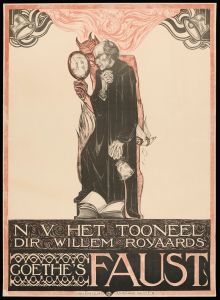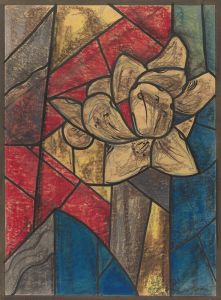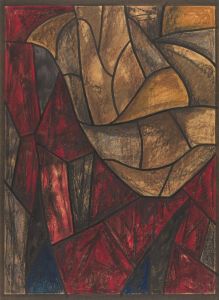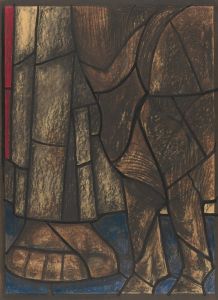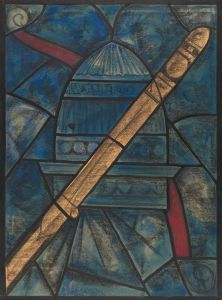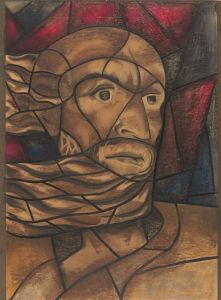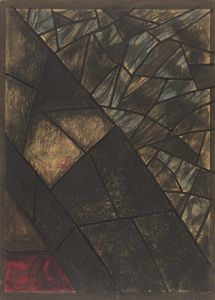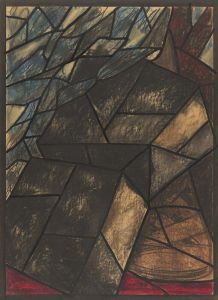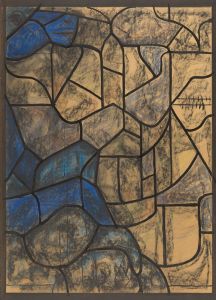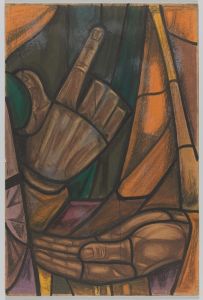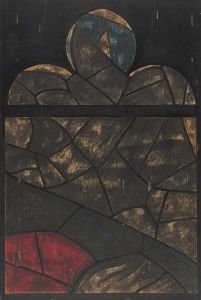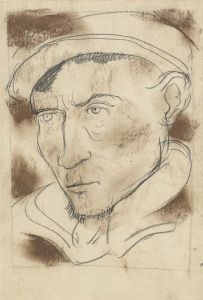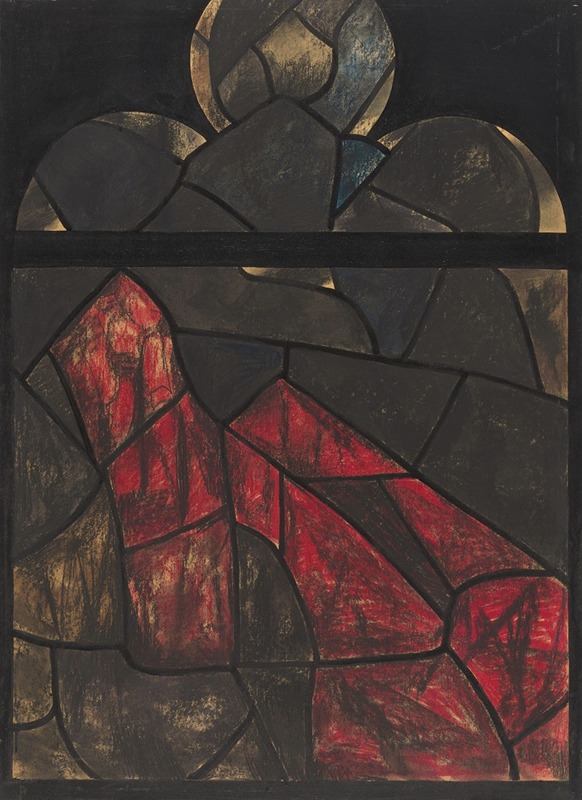
Ontwerp voor raam in het Noordertransept in de Dom te Utrecht 44
A hand-painted replica of Richard Nicolaüs Roland Holst’s masterpiece Ontwerp voor raam in het Noordertransept in de Dom te Utrecht 44, meticulously crafted by professional artists to capture the true essence of the original. Each piece is created with museum-quality canvas and rare mineral pigments, carefully painted by experienced artists with delicate brushstrokes and rich, layered colors to perfectly recreate the texture of the original artwork. Unlike machine-printed reproductions, this hand-painted version brings the painting to life, infused with the artist’s emotions and skill in every stroke. Whether for personal collection or home decoration, it instantly elevates the artistic atmosphere of any space.
Richard Nicolaüs Roland Holst was a prominent Dutch artist known for his contributions to the arts and crafts movement in the Netherlands. He was born on December 4, 1868, in Amsterdam and became a significant figure in the Dutch art scene during the late 19th and early 20th centuries. Roland Holst was a versatile artist, engaging in painting, drawing, and designing stained glass windows, among other artistic endeavors.
One of his notable works is the "Ontwerp voor raam in het Noordertransept in de Dom te Utrecht 44," which translates to "Design for a Window in the North Transept in the Cathedral of Utrecht 44." This work is a design for a stained glass window intended for the Dom Church, also known as St. Martin's Cathedral, in Utrecht, Netherlands. The Dom Church is a Gothic-style cathedral that has been a central landmark in Utrecht for centuries, with a rich history dating back to its initial construction in the 13th century.
Roland Holst's design for the window reflects his deep engagement with the symbolism and aesthetics of the arts and crafts movement, which sought to integrate art into everyday life and emphasized craftsmanship and design. His work often incorporated elements of symbolism and was influenced by his interest in literature, mythology, and social themes. Roland Holst was known for his ability to blend traditional techniques with modern ideas, creating works that were both innovative and rooted in historical styles.
The stained glass window design for the Dom Church would have been part of a larger effort to restore and enhance the cathedral's interior, which has undergone various renovations and restorations over the centuries. Stained glass windows are a significant feature of Gothic architecture, serving both decorative and didactic purposes by illustrating biblical stories and saints' lives, as well as enhancing the spiritual atmosphere of the space through the play of colored light.
While specific details about the content and imagery of Roland Holst's design for the window in the north transept are not extensively documented, it is likely that the work would have been consistent with his other stained glass projects, which often featured intricate patterns, vibrant colors, and symbolic motifs. Roland Holst's contributions to stained glass art are well-regarded, and his works can be found in various churches and public buildings throughout the Netherlands.
In addition to his artistic work, Richard Roland Holst was also an influential teacher and writer. He served as a professor at the Rijksakademie van Beeldende Kunsten in Amsterdam, where he influenced a generation of Dutch artists. His writings on art and society reflect his commitment to the idea that art should play a vital role in social and cultural life.
Richard Nicolaüs Roland Holst passed away on December 31, 1938, leaving behind a legacy of artistic innovation and a body of work that continues to be appreciated for its beauty and craftsmanship. His design for the window in the Dom Church in Utrecht remains a testament to his skill and vision as an artist who sought to harmonize art with architecture and spirituality.





